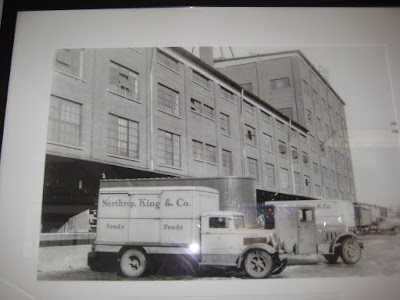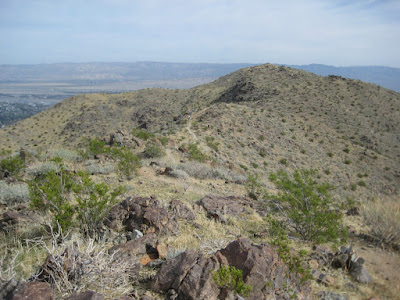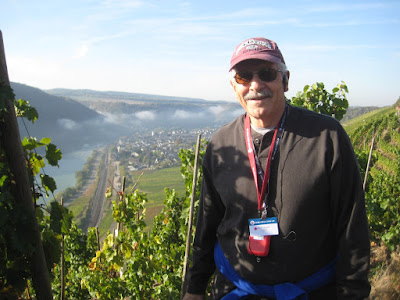Thomas Merton
I’ve been there before. Perhaps it’s a generational thing. An old steel
and brick icon of prosperity in an ethnically tight community gradually
succumbs to the ravages of time only to be reborn years later as the cradle of
artistic and entrepreneurial endeavors. The NKB; that ancient Northrup King
Building in Northeast Minneapolis, is now buzzing with life. The age of
antiquities is alive again and with it come some old familiar problems.
While growing up in Saint Paul I was never aware of old Norde East. It
could have been on the other side of the planet for all my wanderings around
town. Even after college when I lived in a hovel near Dinky Town, Northeast was
one part of town that held absolutely no allure for me. It was on the other
side of East Hennepin Avenue and considered no man’s land to most of us late
night wanderers.
Now gentrification, that flip side of success, has poked its commercial
and economic head into the area and not everyone is happy about it. It’s an
evolution that has gone on for the ages and it never seems to change. Artists
in the area first notice nearby buildings being remodeled, coffee shops spring
up along with boutique shops, art galleries and craft breweries. The current
residents have seen it happen before. More people means higher rents, fewer
affordable options for living and finally displacement when rents force out
many of the old-timers.
Minneapolis is in the midst of a building boom that has seen building
permits exceeding one billion dollars this year alone. Millennium homeowners,
renters, suburban empty nesters and visitors seeking craft beer and vintage
shops are transforming the area. What was once an Eastern Europe enclave of
factory workers has been transformed into the Twin Cities hottest and most
diverse creative community. Urban planners can only shake their head and say:
“What else did you expect”
Northeast Minneapolis began as an ethnic enclave supplying workers for
the factories that lined Central Avenue and batched them in clusters throughout
the neighborhood. My only vague connection back then was a secretary who worked
in our office at the Minnesota Department of Public Health. I remember she
commented once that she lived in Norde East. It never registered with me where or what it
was.
Fifty years after the West Bank
of the University of Minnesota harbored the disenfranchised, the hippies and
other malcontents of a similar ilk; their decedents have now migrated to the
North-east part of Minneapolis. In an unplanned, almost organic metamorphosis
of a cityscape, this unwashed morass of creativity has moved west. Old
Nordeast, an eclectic enclave of blue-collar Eastern European nationalities,
has become the new West Bank.
This stumble back in time reminded me of my own barstool contemplations
spent at the Triangle Bar on West Bank. This was shortly before the neighborhood
slowly began to recede from the expansion of the University of Minnesota and
high rise apartments towering over that dusty old neighborhood.
Now that same feeling of change in the air hit me after I dropped my wife
off at her art class in the NKB. I ended up meandering the old hallways and
vacant caverns that once housed huge stores of seeds. I began perusing the
framed photographs that lined the entrance halls. The old seed factory has now
become an artist’s enclave encompassing five stories of concrete and brick. It
reeks of artistic ventures, bold colors, creative design and old world charm in
an ancient brick building now repurposed for the creative at heart. I feel like
I’d come home again.
Back in twenties and thirties
Northrup King was one of the largest seed producers in the world. Time and changing
economics changed the equation and the business went bust. The building lay
dormant and empty for many years, inhabited only by vagrants, dopers and rats.
Then a new generation of entrepreneurs discovered its solid foundation, huge
windows, cheap rent and a blank canvas for change.
Most of Norde East is like an old graveyard of senior buildings brought
back to life by creative resuscitation. Vesper College is located in the
Casket Arts Building. Originally built as the Northwestern Casket Company
building in 1887, caskets were still being made there until 2005. Now the
five-story building houses over 100 artists and businesses such as Vesper.
Other notable nests of creativity
are the Architectural Antiques Building, originally a coffee roasting plant. Of
course, the Northrup King Building, originally a seed distributor for the
world. The Waterbury Building, manufacturers of boilers and multiple buildings
that were part of the Grain Belt Brewing complex.
Now instead of transplanted hippies,
there are artisans, house flippers, yoga gurus, craft beer specialists,
software developers and other creative types flocking to the area. A new
variety of business has also sprung up whose main purpose is to breathe life
into the arts for a whole new generation, young and not so young.
The roughhewn, anti-fashion,
individualistic, truth-seeking individuals whom I find so fascinat-ing all hang out there. It’s not as compact as Dinky town
but the atmosphere is the same. The haunts of past lives have come alive again
in that charged arena. It’s almost as if inquiring minds once again scream for
an exploration of life’s truths in that modern version of old Bohemia.
Sharon has found an outlet for
her creative expression. That, in turn, has brought me back to that other part
of my old world. Inspiration comes in all kinds of strange packages even in a
seed shop in the middle of a confused dreamland called eternal youth.
While I’m there, I want to haunt
the halls and soak up the atmosphere. Perhaps I can build a nest someplace
while my wife is in class where I can just write to my heart’s content. It
seems like a good place to explore the recesses of one’s mind, mining whatever
thoughts and ideas might be lingering there. I’ve got a lot of hard miles on
that gray matter of mine.
Time to go exploring again.


















































